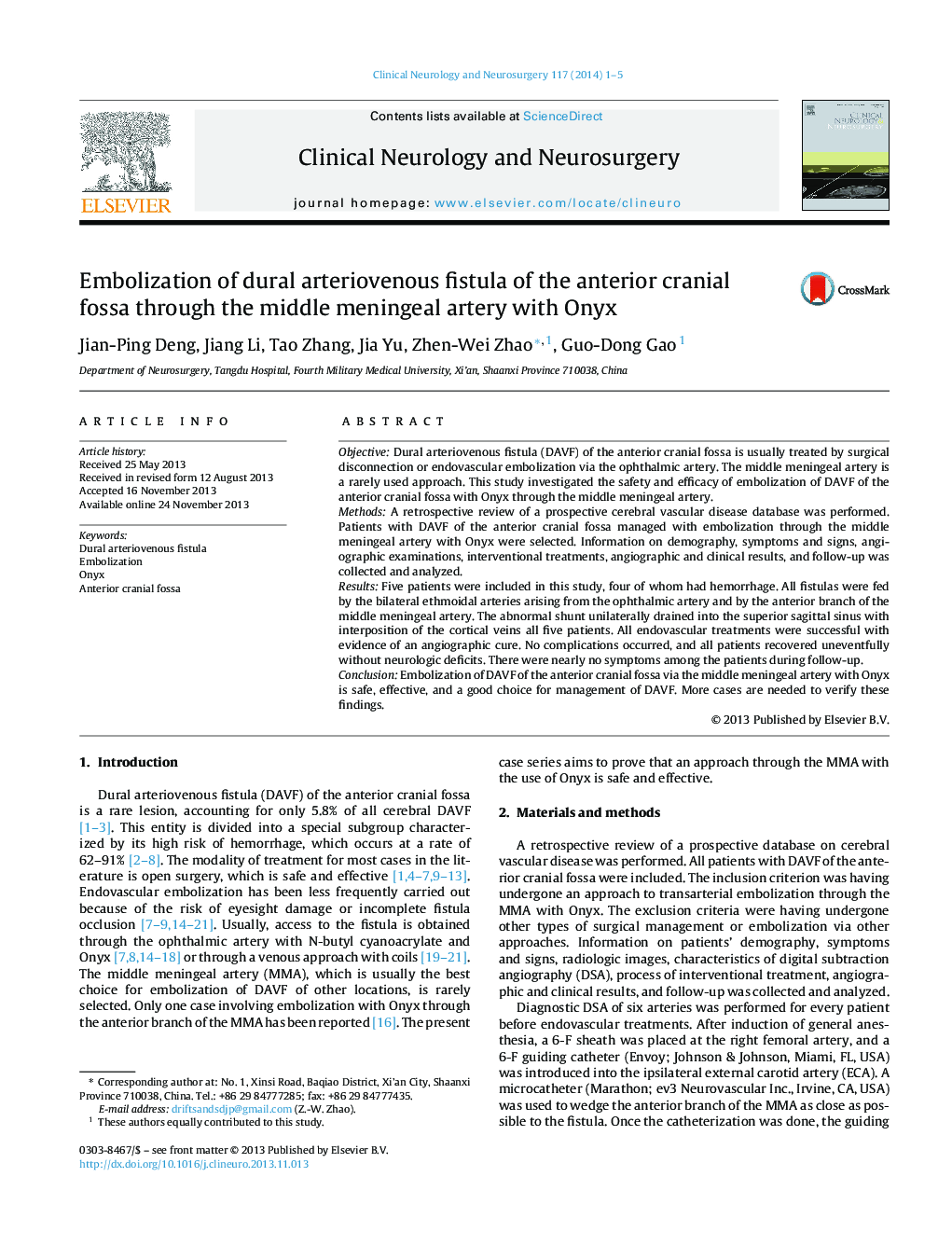| Article ID | Journal | Published Year | Pages | File Type |
|---|---|---|---|---|
| 3040342 | Clinical Neurology and Neurosurgery | 2014 | 5 Pages |
ObjectiveDural arteriovenous fistula (DAVF) of the anterior cranial fossa is usually treated by surgical disconnection or endovascular embolization via the ophthalmic artery. The middle meningeal artery is a rarely used approach. This study investigated the safety and efficacy of embolization of DAVF of the anterior cranial fossa with Onyx through the middle meningeal artery.MethodsA retrospective review of a prospective cerebral vascular disease database was performed. Patients with DAVF of the anterior cranial fossa managed with embolization through the middle meningeal artery with Onyx were selected. Information on demography, symptoms and signs, angiographic examinations, interventional treatments, angiographic and clinical results, and follow-up was collected and analyzed.ResultsFive patients were included in this study, four of whom had hemorrhage. All fistulas were fed by the bilateral ethmoidal arteries arising from the ophthalmic artery and by the anterior branch of the middle meningeal artery. The abnormal shunt unilaterally drained into the superior sagittal sinus with interposition of the cortical veins all five patients. All endovascular treatments were successful with evidence of an angiographic cure. No complications occurred, and all patients recovered uneventfully without neurologic deficits. There were nearly no symptoms among the patients during follow-up.ConclusionEmbolization of DAVF of the anterior cranial fossa via the middle meningeal artery with Onyx is safe, effective, and a good choice for management of DAVF. More cases are needed to verify these findings.
